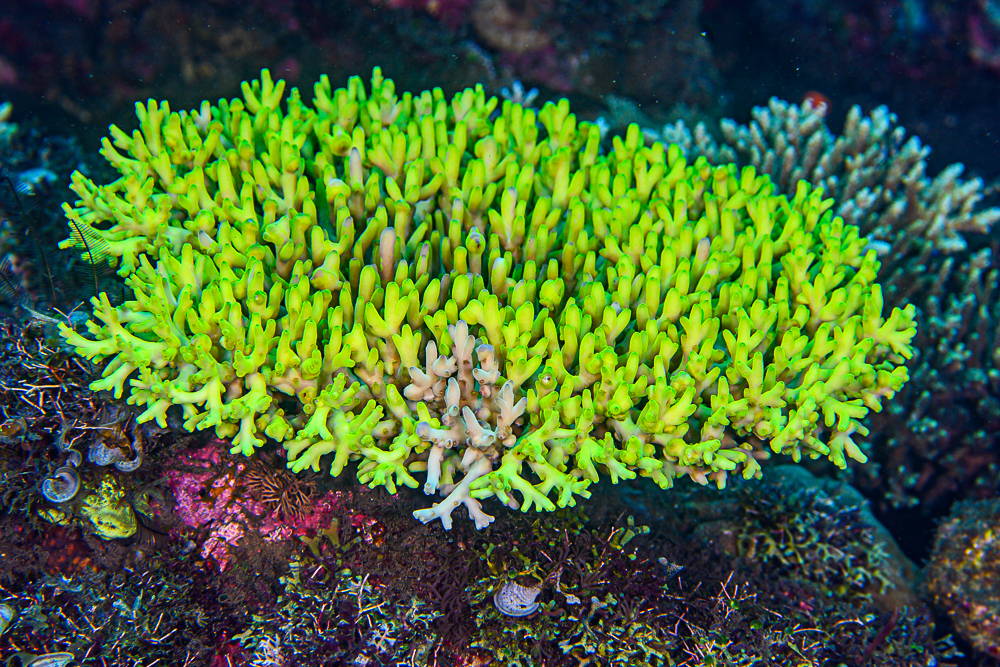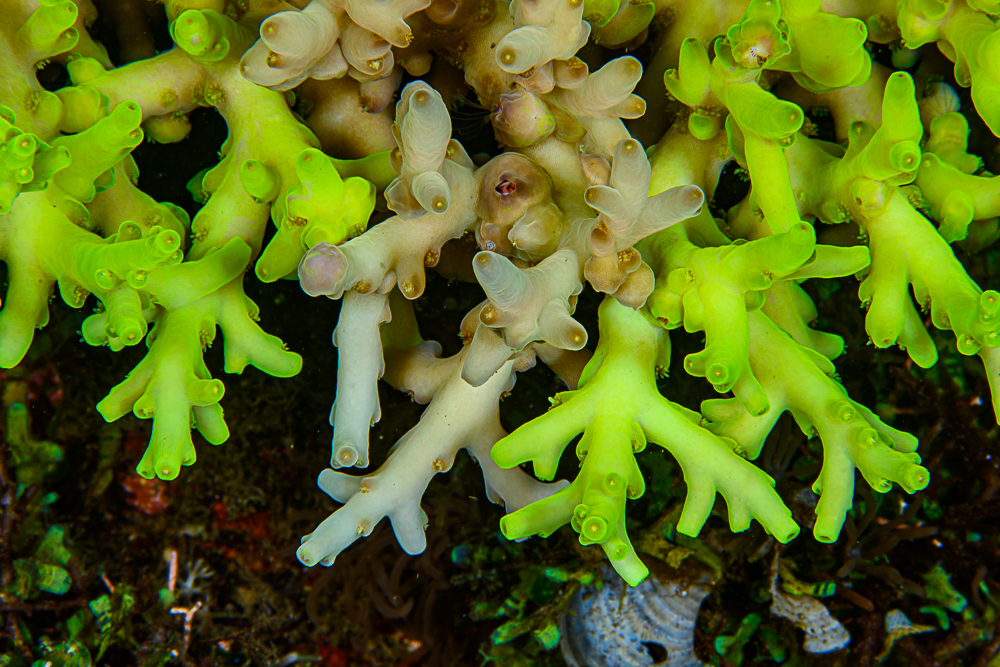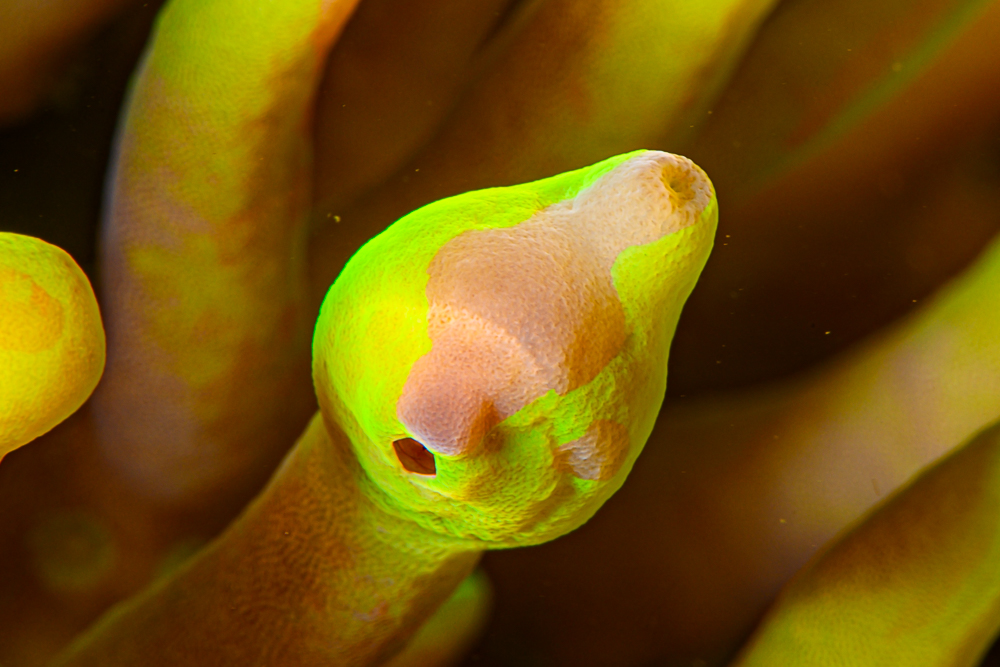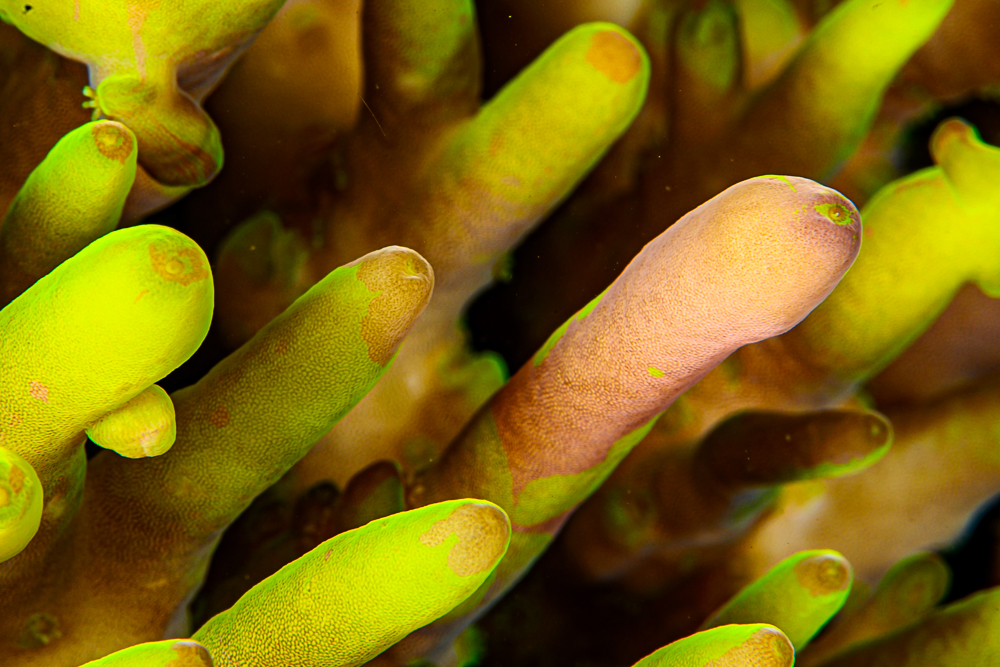
Another day on the reef, another fine discovery. While diving in central Indonesia, I was lucky enough to come upon one of the nicest Acropora carolinana I have ever found. This particular yellow strain is a classic Bali Maricultured Acropora coral that regularly finds its way into reef shops. But this particular specimen was different.
“Grafted”: A rare and highly sought-after phenomenon:
Color ‘grafted’ corals are highly sought after by aquarists. And they are actually more common than we thought. You can’t find one every dive, but you can come upon one quite regularly. However, you need to pay attention, as usually these mixed-color corals are quite subtle. The “grafting” usually only covers a couple of branch tips, so good observation skills are necessary.

When looking at a coral like this, the bicoloration pattern is precious, and could be expanded by a good aquarist. Cultivating a coral like this would start by cutting off that particular branch tip and farming it intensively. Until certain colonies that just had a bicolor tip become fully bicolored colonies, it is a long and tedious project, best performed by some of the best coral farmers.

The mechanism behind this pigment “grafting” is not precise. Probably different processes are involved in this phenomenon. Both coloration forms cohabit together on the reefs. It could be genetic, stress-related, infectious, or any combination of the three possible causes. Some genera like Acropora and Montipora are particularly susceptible to displaying this sort of color patterning, but it is also a widespread color phenomenon in Echinophyllia spp. chalice corals too. Are the multicolor Acanthophyllia or Homophyllia representative of the same process?

Habitat: Where we found it living…
We found this particular colony on a steep rocky volcanic ridge, around 15 m deep. This is a rather mid-depth coral, that is rather well-lit for a typically deep-water Acropora species. Could the higher light levels play a role in the color grafting process? The volcanic ridge where it was growing often provides necessary turbulence in the flow, that slows down water movement and allows the coral to feed. These types of ridges always have a nice coral cover on both sides.
There are still plenty of crazy corals out there, and I look forward to sharing them with you!




